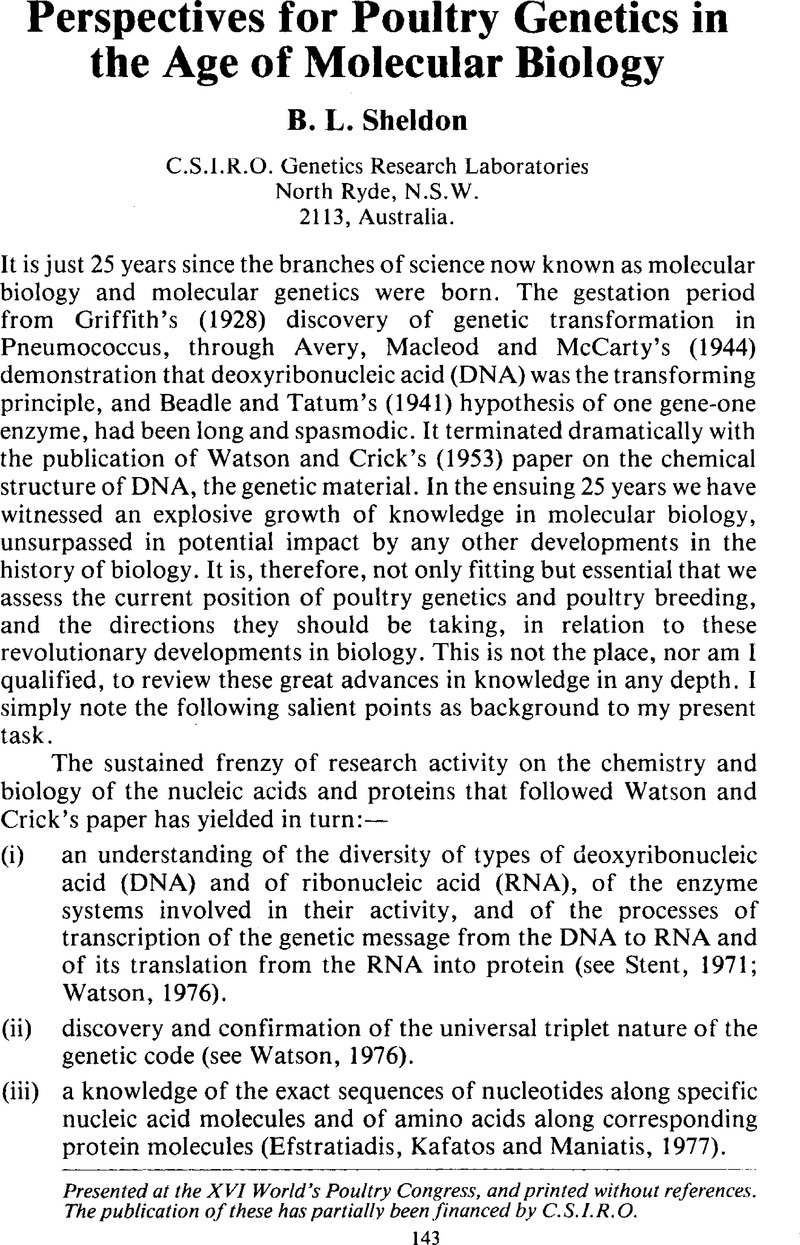Crossref Citations
This article has been cited by the following publications. This list is generated based on data provided by Crossref.
SEXTON, THOMAS J.
1981.
New Technologies in Animal Breeding.
p.
81.
LAKE, P.E.
1986.
The History and Future of the Cryopreservation of Avian Germ Plasm.
Poultry Science,
Vol. 65,
Issue. 1,
p.
1.
Buss, Edward G.
1989.
Genetics of turkeys: Origin and development.
World's Poultry Science Journal,
Vol. 45,
Issue. 1,
p.
27.
LUITING, P.
and
URFF, E.M.
1991.
Residual Feed Consumption in Laying Hens..
Poultry Science,
Vol. 70,
Issue. 8,
p.
1655.





